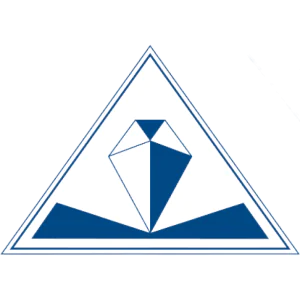Applied Surface Science, volume 558, pages 149857
Bactericidal impact of nickel-oxide nanoparticles on foodborne pathogens: Complementary microbiological and IR-spectroscopic insights
Nastulyavichus Alena
1
,
Borodina Tatiana
,
Rudenko Andrey
,
Ionin Andrey
2
,
Shahov Pavel
1, 3
,
Tolordava Eteri
,
Yushina Yulia
4
,
Kudryashov Sergey
,
Saraeva Irina
1
,
Khmelnitskiy Roman
2
,
Khmelenin Dmitry
,
Kharin Alexander
,
Khaertdinova Liliana
2
,
Tolordava E R
1
,
Rudenko Andrey E.
2
,
Khmelenin Dmitry
5
,
Borodina Tatiana
5, 6
,
Kharin Alexander
7
,
5
Publication type: Journal Article
Publication date: 2021-08-01
Journal:
Applied Surface Science
Quartile SCImago
Q1
Quartile WOS
Q1
Impact factor: 6.7
ISSN: 01694332
Surfaces, Coatings and Films
General Chemistry
General Physics and Astronomy
Condensed Matter Physics
Surfaces and Interfaces
Abstract
• NiO x nanoparticles were produced by laser ablation in deionized water and air. • Live/dead tests revealed structural damage to the bacterial membranes. • FTIR spectroscopy exhibit enhancement of IR-absorption in molecular fragments. Food pathogens ( Staphylococcus aureus , Listeria monocytogenes , and Pseudomonas aeruginosa ) in planktonic form were subjected to bactericidal treatment by colloidal nanoparticles. NiO x colloidal nanoparticles, as anti-biotic nanomaterial, were produced by laser ablation in deionized water and air, and comprehensively characterized by x-ray diffraction, scanning electron microscopy, energy dispersive X-ray, Raman, Fourier transformed infrared (FT-IR) spectroscopy, dynamic light scattering size and zeta-potential measurements. Normalized Fourier transformed infrared (FT-IR) spectra of the nanoparticle-inactivated bacteria deposits exhibit for the larger, positively charged water-borne nanoparticles pronounced enhancement of IR-absorption in molecular fragments, comprising the bacterial membrane, which appears to be unfavorable for the inactivation of the food bacteria strains. In contrast, smaller and less charged air-borne nanoparticles exhibit less influence in IR-absorption, but pronounced TEM-envisioned penetration inside these pathogenic bacteria, resulting, according to the complementary microbiological tests, in their efficient inactivation. The study will help to understand the possible mechanisms responsible for the death of bacteria at their interacting with antibacterial nanoparticles.
Citations by journals
|
1
|
|
|
Micromachines

|

Micromachines
1 publication, 14.29%
|
|
Molecules

|

Molecules
1 publication, 14.29%
|
|
Laser Physics Letters

|

Laser Physics Letters
1 publication, 14.29%
|
|
Applied Surface Science

|

Applied Surface Science
1 publication, 14.29%
|
|
Materials Chemistry and Physics

|

Materials Chemistry and Physics
1 publication, 14.29%
|
|
1
|
Citations by publishers
|
1
2
|
|
|
Multidisciplinary Digital Publishing Institute (MDPI)

|

Multidisciplinary Digital Publishing Institute (MDPI)
2 publications, 28.57%
|
|
Elsevier

|

Elsevier
2 publications, 28.57%
|
|
IOP Publishing

|

IOP Publishing
1 publication, 14.29%
|
|
1
2
|
- We do not take into account publications that without a DOI.
- Statistics recalculated only for publications connected to researchers, organizations and labs registered on the platform.
- Statistics recalculated weekly.
{"yearsCitations":{"type":"bar","data":{"show":true,"labels":[2021,2022,2023,2024],"ids":[0,0,0,0],"codes":[0,0,0,0],"imageUrls":["","","",""],"datasets":[{"label":"Citations number","data":[1,3,2,1],"backgroundColor":["#3B82F6","#3B82F6","#3B82F6","#3B82F6"],"percentage":["14.29","42.86","28.57","14.29"],"barThickness":null}]},"options":{"indexAxis":"x","maintainAspectRatio":true,"scales":{"y":{"ticks":{"precision":0,"autoSkip":false,"font":{"family":"Montserrat"},"color":"#000000"}},"x":{"ticks":{"stepSize":1,"precision":0,"font":{"family":"Montserrat"},"color":"#000000"}}},"plugins":{"legend":{"position":"top","labels":{"font":{"family":"Montserrat"},"color":"#000000"}},"title":{"display":true,"text":"Citations per year","font":{"size":24,"family":"Montserrat","weight":600},"color":"#000000"}}}},"journals":{"type":"bar","data":{"show":true,"labels":["Micromachines","Molecules","Laser Physics Letters","Applied Surface Science","Materials Chemistry and Physics"],"ids":[1083,1770,3077,12539,12041],"codes":[0,0,0,0,0],"imageUrls":["\/storage\/images\/resized\/MjH1ITP7lMYGxeqUZfkt2BnVLgjkk413jwBV97XX_medium.webp","\/storage\/images\/resized\/MjH1ITP7lMYGxeqUZfkt2BnVLgjkk413jwBV97XX_medium.webp","\/storage\/images\/resized\/LsKy6OnmmmRGcAU6CZgWQvNiP1polbaSLNrN7zqj_medium.webp","\/storage\/images\/resized\/GDnYOu1UpMMfMMRV6Aqle4H0YLLsraeD9IP9qScG_medium.webp","\/storage\/images\/resized\/GDnYOu1UpMMfMMRV6Aqle4H0YLLsraeD9IP9qScG_medium.webp"],"datasets":[{"label":"","data":[1,1,1,1,1],"backgroundColor":["#3B82F6","#3B82F6","#3B82F6","#3B82F6","#3B82F6"],"percentage":[14.29,14.29,14.29,14.29,14.29],"barThickness":13}]},"options":{"indexAxis":"y","maintainAspectRatio":false,"scales":{"y":{"ticks":{"precision":0,"autoSkip":false,"font":{"family":"Montserrat"},"color":"#000000"}},"x":{"ticks":{"stepSize":null,"precision":0,"font":{"family":"Montserrat"},"color":"#000000"}}},"plugins":{"legend":{"position":"top","labels":{"font":{"family":"Montserrat"},"color":"#000000"}},"title":{"display":true,"text":"Journals","font":{"size":24,"family":"Montserrat","weight":600},"color":"#000000"}}}},"publishers":{"type":"bar","data":{"show":true,"labels":["Multidisciplinary Digital Publishing Institute (MDPI)","Elsevier","IOP Publishing"],"ids":[202,17,2075],"codes":[0,0,0],"imageUrls":["\/storage\/images\/resized\/MjH1ITP7lMYGxeqUZfkt2BnVLgjkk413jwBV97XX_medium.webp","\/storage\/images\/resized\/GDnYOu1UpMMfMMRV6Aqle4H0YLLsraeD9IP9qScG_medium.webp","\/storage\/images\/resized\/LsKy6OnmmmRGcAU6CZgWQvNiP1polbaSLNrN7zqj_medium.webp"],"datasets":[{"label":"","data":[2,2,1],"backgroundColor":["#3B82F6","#3B82F6","#3B82F6"],"percentage":[28.57,28.57,14.29],"barThickness":13}]},"options":{"indexAxis":"y","maintainAspectRatio":false,"scales":{"y":{"ticks":{"precision":0,"autoSkip":false,"font":{"family":"Montserrat"},"color":"#000000"}},"x":{"ticks":{"stepSize":null,"precision":0,"font":{"family":"Montserrat"},"color":"#000000"}}},"plugins":{"legend":{"position":"top","labels":{"font":{"family":"Montserrat"},"color":"#000000"}},"title":{"display":true,"text":"Publishers","font":{"size":24,"family":"Montserrat","weight":600},"color":"#000000"}}}}}
Metrics
Cite this
GOST |
RIS |
BibTex
Cite this
GOST
Copy
Nastulyavichus A. et al. Bactericidal impact of nickel-oxide nanoparticles on foodborne pathogens: Complementary microbiological and IR-spectroscopic insights // Applied Surface Science. 2021. Vol. 558. p. 149857.
GOST all authors (up to 50)
Copy
Shahov P., Kharin A., Khmelenin D., Khmelnitskiy R., Saraeva I., Kudryashov S., Borodina T., Ionin A., Rudenko A., Yushina Y., Tolordava E., Khaertdinova L., Nastulyavichus A., Khaertdinova L., Tolordava E. R., Rudenko A. E., Khmelenin D., Borodina T., Kharin A., Kudryashov S. Bactericidal impact of nickel-oxide nanoparticles on foodborne pathogens: Complementary microbiological and IR-spectroscopic insights // Applied Surface Science. 2021. Vol. 558. p. 149857.
Cite this
RIS
Copy
TY - JOUR
DO - 10.1016/j.apsusc.2021.149857
UR - https://doi.org/10.1016%2Fj.apsusc.2021.149857
TI - Bactericidal impact of nickel-oxide nanoparticles on foodborne pathogens: Complementary microbiological and IR-spectroscopic insights
T2 - Applied Surface Science
AU - Nastulyavichus, Alena
AU - Shahov, Pavel
AU - Khaertdinova, Liliana
AU - Tolordava, Eteri
AU - Yushina, Yulia
AU - Rudenko, Andrey
AU - Ionin, Andrey
AU - Borodina, Tatiana
AU - Kudryashov, Sergey
AU - Saraeva, Irina
AU - Khmelnitskiy, Roman
AU - Khmelenin, Dmitry
AU - Kharin, Alexander
AU - Khaertdinova, Liliana
AU - Tolordava, E R
AU - Rudenko, Andrey E.
AU - Khmelenin, Dmitry
AU - Borodina, Tatiana
AU - Kharin, Alexander
AU - Kudryashov, Sergey
PY - 2021
DA - 2021/08/01 00:00:00
PB - Elsevier
SP - 149857
VL - 558
SN - 0169-4332
ER -
Cite this
BibTex
Copy
@article{2021_Nastulyavichus,
author = {Alena Nastulyavichus and Pavel Shahov and Liliana Khaertdinova and Eteri Tolordava and Yulia Yushina and Andrey Rudenko and Andrey Ionin and Tatiana Borodina and Sergey Kudryashov and Irina Saraeva and Roman Khmelnitskiy and Dmitry Khmelenin and Alexander Kharin and Liliana Khaertdinova and E R Tolordava and Andrey E. Rudenko and Dmitry Khmelenin and Tatiana Borodina and Alexander Kharin and Sergey Kudryashov},
title = {Bactericidal impact of nickel-oxide nanoparticles on foodborne pathogens: Complementary microbiological and IR-spectroscopic insights},
journal = {Applied Surface Science},
year = {2021},
volume = {558},
publisher = {Elsevier},
month = {aug},
url = {https://doi.org/10.1016%2Fj.apsusc.2021.149857},
pages = {149857},
doi = {10.1016/j.apsusc.2021.149857}
}


